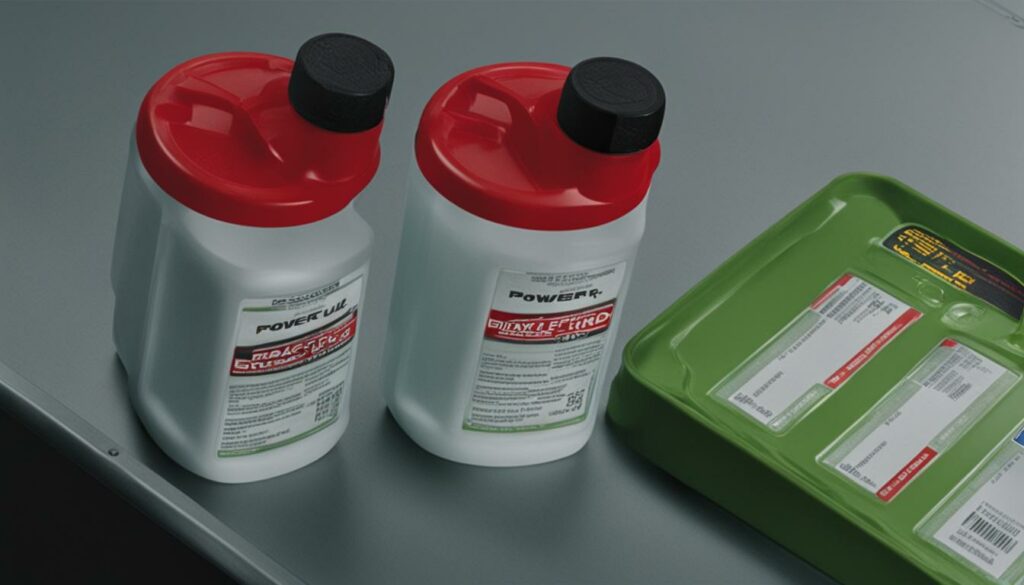If you’re in the market for a differential, you’ve likely come across the Wavetrac and Truetrac options. These two differentials are popular choices among car enthusiasts and racers, but with so many options available, how can you decide which one is the right fit for your vehicle?
In this section, we’ll take a deep dive into Wavetrac and Truetrac differentials, uncovering the performance secrets behind these two options. By the end of this section, you’ll have a clear understanding of the differences between the two and which one is best suited for your driving needs.

Key Takeaways:
- Wavetrac and Truetrac are popular differential options among car enthusiasts and racers.
- Understanding the performance secrets behind these two options can help you make an informed decision on which differential is best for your vehicle.
- Factors such as torque biasing capabilities, power transfer, and handling improvements are all important considerations when evaluating the performance of these differentials.
- Ultimately, the choice between Wavetrac and Truetrac depends on your specific driving needs and priorities.
- Stay tuned for our in-depth comparison of the performance, durability, cost, and warranty considerations of Wavetrac and Truetrac differentials.
Understanding Differentials: Wavetrac and Truetrac
When it comes to choosing a differential for your vehicle, it’s essential to understand the basics of how they work. Differentials are a crucial component of your car’s drivetrain, and they play a vital role in distributing power to the wheels. Without them, your car’s wheels would spin at different speeds, making turning and handling difficult.
Wavetrac and Truetrac are two types of differentials that provide improved traction and handling performance. Both differentials work by biasing torque to the wheel with the most traction, ensuring that both wheels receive power and reducing the chances of slipping.
One of the distinctive features of Wavetrac differentials is their use of Wave Hub technology. The Wave Hub is a unique design that creates a mechanical advantage, allowing the differential to provide stronger torque biasing than conventional differentials. The Wave Hub is also made of high-strength materials, ensuring that the differential can handle high levels of torque and stress.
Truetrac differentials, on the other hand, use a helical gear design to provide torque biasing. The design of the gear allows it to transfer power to the wheel with the most traction, enhancing handling and performance. Truetrac differentials are also known for being smooth and quiet, making them an excellent choice for daily drivers.
One essential thing to note about Wavetrac and Truetrac differentials is that they work differently from each other. The Wave Hub technology in Wavetrac provides instant torque biasing, which means it can handle sudden changes in traction. Truetrac’s helical gears, on the other hand, provide a more gradual transfer of power, which can improve handling and predictability in some situations.
Overall, both Wavetrac and Truetrac differentials can provide significant improvements in traction and handling. Understanding their unique features and how they work is essential in choosing the right differential for your driving needs.
Performance Comparison: Wavetrac vs. Truetrac
Now that we have a better understanding of what differentials are and how they work, let’s compare the performance of Wavetrac and Truetrac differentials.
When it comes to performance, both Wavetrac and Truetrac differentials promise improved traction and handling capabilities. Wavetrac differentials use a patented design that ensures maximum transfer of torque to the wheels with the most traction. This results in superior handling and stability, even in slippery or uneven driving conditions. On the other hand, Truetrac differentials rely on a helical gear design to transfer power to the wheels. This design minimizes wheel slippage and improves traction, particularly in off-road or low-traction environments.
In terms of handling, Wavetrac differentials are known for providing precise and consistent handling, regardless of the driving conditions. The unique design of the Wavetrac differential means that it actively optimizes traction and handling, resulting in a smoother and more controlled driving experience. Truetrac differentials, meanwhile, also provide stable handling but may feel less precise in comparison to Wavetrac.
In terms of traction, both Wavetrac and Truetrac differentials provide noticeable improvements over standard stock differentials. However, Wavetrac differentials are known for their ability to transfer power to the wheels with the most traction effectively. This ensures that you won’t lose power or go into a slide when driving on surfaces with uneven traction or during quick maneuvers. When it comes to off-road driving, Truetrac differentials are often the preferred choice owing to their ability to achieve maximum traction even on rocky or muddy terrains.
In summary, both Wavetrac and Truetrac differentials provide significant improvements in traction and handling over standard stock differentials. However, Wavetrac differentials are a better choice for drivers looking for precise and stable handling, particularly in slippery or uneven driving conditions. Truetrac differentials are a better choice for off-road enthusiasts looking for maximum traction and improved handling on rugged terrains.
Durability and Cost: Wavetrac vs. Truetrac
When investing in a differential, it’s essential to consider durability and cost. After all, you want a high-performing differential that will last you for years to come and won’t break the bank.
Let’s first examine the durability of Wavetrac and Truetrac differentials. Wavetrac differentials are crafted with high-quality materials, including 9310 steel gears and case-hardened billet steel. These materials make the differential stronger and more resistant to wear and tear. Moreover, Wavetrac differentials have a limited lifetime warranty, so you can rest assured that your investment is protected.
In comparison, Truetrac differentials are also constructed with robust materials, including heat-treated, high-strength steel gears, and friction plates. The materials used in Truetrac differentials make them more durable and give them a longer lifespan. Unlike Wavetrac, Truetrac differentials come with a two-year warranty.
Now let’s turn our attention to cost. Wavetrac differentials are generally more expensive than Truetrac differentials. However, considering their quality and durability, Wavetrac differentials provide better value for money in the long run. Truetrac differentials are a more budget-friendly option, but they may not last as long as Wavetrac differentials.
Overall, both Wavetrac and Truetrac differentials are designed to deliver maximum performance and durability. However, if you’re looking for a differential that will last you a lifetime, we recommend investing in a Wavetrac differential. If cost is a driving factor, Truetrac differential may be a more suitable option.
Warranty Considerations: Wavetrac vs. Truetrac
When investing in a differential, it’s important to consider the warranty offered by the manufacturer to ensure long-term peace of mind. Fortunately, both Wavetrac and Truetrac offer warranties for their differentials.
Let’s take a closer look at the warranty considerations for Wavetrac and Truetrac:
| Manufacturer | Warranty Coverage | Warranty Terms |
|---|---|---|
| Wavetrac | Limited lifetime warranty | Covers defects in materials and workmanship |
| Truetrac | 1-year limited warranty | Covers defects in materials and workmanship |
As you can see, Wavetrac offers a limited lifetime warranty, while Truetrac offers a 1-year limited warranty. This means that if you encounter any defects in materials or workmanship during the specified warranty period, the manufacturer will cover the cost of repair or replacement.
While Wavetrac’s warranty may seem superior due to its extended duration, it’s important to note that the coverage and terms of both warranties are similar. It ultimately comes down to your personal preference and priorities.
Regardless of which differential you choose, it’s always a good idea to read and understand the manufacturer’s warranty before making a purchase. This will help you avoid any potential confusion or disputes in the future.
Conclusion
Congratulations on reaching the conclusion of our article on Wavetrac vs. Truetrac differentials. By now, you should have a better understanding of the performance secrets behind these two options and which one is best suited for your driving needs.
Remember, when considering a differential upgrade, it’s important to evaluate not only performance but also durability, cost, and warranty considerations. Wavetrac and Truetrac both have unique features that can enhance your vehicle’s traction and handling, but ultimately the choice depends on your priorities and preferences.
Whether you prefer the advanced torque biasing technology of Wavetrac or the reliable mechanical design of Truetrac, you can feel confident in your decision knowing that you have made an informed choice based on your specific driving needs.
Thank you for reading our article, and we hope it has provided you with the information you need to make an educated decision on which differential is best for you. Happy driving!


